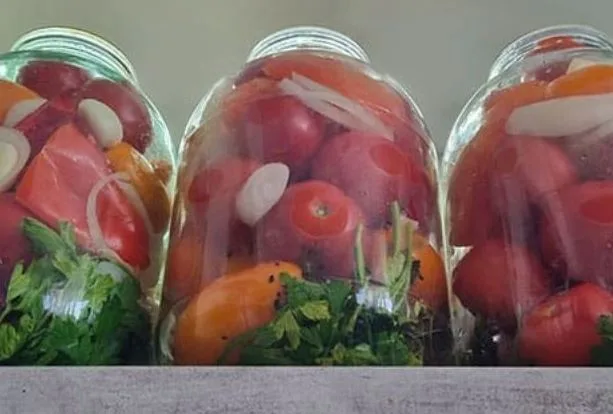A Comprehensive Guide for Lacto-Fermentation?
Using the power of naturally occurring bacteria, lacto-fermentation is an ancient preservation technique that turns fruits, vegetables, and even some grains into tasty, probiotic-rich foods. This procedure improves the nutritional value and flavor of foods while also extending their shelf life. As a result, many people enjoy the tangy, acidic flavor, and the probiotics created during fermentation also have the added benefit of promoting intestinal health.
How Lacto-Fermentation Works
At its core, lacto-fermentation is the process of breaking down the sugars and starches in food utilizing lactic acid bacteria (LAB). There is no need for oxygen because this activity takes place in an anaerobic environment. Rather, the bacteria make lactic acid, which gives the dish its distinctively sour flavor, and flourish in the lack of oxygen. This technique can be used for a variety of foods, including fruits, vegetables, and even dairy products like kefir and yogurt.
Benefits of Lacto-Fermentation
Lacto-fermentation encourages the growth of good bacteria while also preserving the natural aromas of fruits and vegetables. It is well known that these probiotics strengthen the immune system, promote gut health, and enhance digestion. For general health, lacto-fermented foods are a fantastic supplement to your diet. Learning the fundamentals of fermentation can lead to a plethora of tasty and nutritious meals if you’re new to the process. Check out this Fermentation guide to learn about more fermentation methods.
The Versatility of Lacto-Fermentation
In addition to preserving food, lacto-fermentation lets you experiment with different flavors and textures in your dishes. You may create customized chutneys, pickles, or even fermented drinks like kefir and kombucha by experimenting with different combinations of fruits, vegetables, and spices thanks to lacto-fermentation’s adaptability.
You’ll learn the subtleties of fermentation as you get more expertise, such as the appropriate duration for fermentation and the ideal ratio of salt to spices. The procedure is enjoyable, fulfilling, and a great method to increase your intake of foods high in probiotics and other nutrients. Thus, begin experimenting now and savor the tastes and health advantages of lacto-fermented foods!
Lacto-Fermentation Tips & Tricks
Basic Ingredients for Lacto-Fermentation
Lacto-fermentation’s simplicity is what makes it so lovely. All you need is a few simple things: salt, water, and fruits or vegetables. In addition to aiding in the creation of the brine, salt keeps undesirable bacteria from taking control, promoting the growth of lactobacillus bacteria. Herbs and spices including mustard seeds, dill, ginger, and garlic can be added for taste.
Preparation for Fermentation
To start the fermentation process:
- Chop, slice, or grate the fruits or vegetables.
- Add salt to the chopped, sliced, or grated produce.
- Mix the salt thoroughly into the produce.
- Transfer the mixture into your fermentation jar.
- Shake the jar well to help release the natural juices.
- This will form the brine needed for fermentation.
If the produce isn’t releasing enough liquid, add more water to ensure everything is fully submerged.
Submerging
To keep your food from coming into contact with oxygen, it is imperative that it is completely submerged in the brine. This maintains the anaerobic conditions necessary for the lactobacillus bacteria to flourish during the fermentation process. If necessary, you can maintain the product below the brine level by pressing it down with a weight.
Fermentation Environment
Keep your fermenting jar out of direct sunlight and at room temperature. As a result, the bacteria can proliferate and produce that mouthwateringly tart taste. The fermentation will start more quickly in a warmer area, so monitor it and taste it occasionally to determine the ideal level of sourness.
Preventing Mold Growth
Make sure that your produce remains submerged in the brine to avoid the formation of mold. Since mold grows when exposed to oxygen, it’s important to keep everything well sealed in the jar. This will be considerably simpler with a tightly-sealing cover or one made for fermentation.
Salt Alternatives for Lacto-Fermentation
Although lacto-fermentation is commonly done using salt, there are other options as well. Vegetable starter cultures are an excellent option if you need to avoid salt for health reasons or are searching for a lower-sodium substitute. You can find these cultures online and in a lot of health food stores. Although they still contain a lot of sodium, seaweeds like kelp can also be used. Therefore, when selecting the best alternative, it’s critical to take your nutritional requirements into account.
Tools for Successful Fermentation
The proper jar is the most important piece of equipment for lacto-fermentation. For small batches, a mason jar is an excellent choice, but the lid is quite important. It is essential to have a lid that lets gasses escape during fermentation while keeping oxygen out of the jar. A fermentation, which offers an airlock mechanism to protect your ferments from mold and guarantee reliable results, is a good investment for the simplest fermentation procedure.
The Fermentation Process
Depending on the temperature and the kind of food you’re fermenting, different amounts of time will be needed. After a week, you should usually test your ferment to evaluate how the tastes are evolving. Just let it ferment longer if you don’t like the amount of sourness. Your lacto-fermented foods should be ready to eat in one to three weeks.
Enjoying Your Lacto-Fermented Foods
Once your lacto-fermentation is complete, you can store your jar in the refrigerator to slow down the fermentation process and preserve the flavors. Lacto-fermented foods can last for several months when properly stored. These tangy, probiotic-rich foods make a wonderful addition to a wide variety of meals. From a classic lacto-fermented cucumber pickle to more adventurous recipes like lacto-fermented peach chutney, there’s so much you can explore with this technique.
Conclusion
Lacto-fermentation is a fantastic way to preserve fruits and vegetables and create delicious, wholesome, probiotic-rich foods. Once you get the hang of it, you can start experimenting with additional fruits, vegetables, and spices to create your own unique ferments.
Creating a creative chutney or a classic pickle is a simple process that always yields delicious results. Adding probiotics to your food will also improve its flavor and nutritional value! Experimenting with flavors and ingredients can open up countless options, broadening your culinary horizons while also improving your health.






